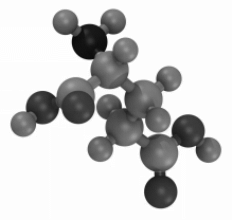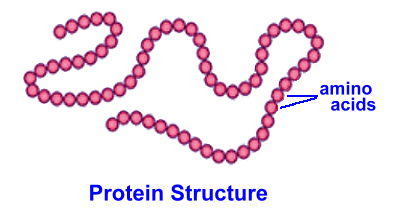  Amino acids are molecules used by all living things to make proteins. Your body needs 20 different amino acids to function correctly; nine of these amino acids are called essential amino acids.
Amino acids are molecules used by all living things to make proteins. Your body needs 20 different amino acids to function correctly; nine of these amino acids are called essential amino acids. Essential amino acids must be obtained from the food you eat, including beef, eggs and dairy. When you combine amino acids in various ways, you can make different proteins. The different types of amino acids and the way they're put together determine the function of each protein.  Your body has thousands of different proteins that each have important jobs. Each protein has its own sequence of amino acids. The sequence makes the protein take different shapes and have different functions in your body. Amino acids help: Your body needs 20 different kinds of amino acids to function correctly. These 20 amino acids combine in different ways to make proteins in your body. While your body can make hundreds of amino acids, there are nine you need that it can't make. These are called essential amino acids. You must get them from the food you eat. The nine essential amino acids are: Foods that contain all nine essential amino acids are called complete proteins. These foods include beef, poultry, fish, eggs, dairy, soy, quinoa and buckwheat. Foods that contain some but not all the essential amino acids are called incomplete proteins. These foods include nuts, seeds, beans and some grains. If you follow a vegetarian or vegan diet, you need to include several types of incomplete proteins in order to ensure you're consuming all nine essential amino acids. Your body produces the rest of the 11 amino acids you need. These are called nonessential amino acids. The nonessential amino acids are alanine, arginine, asparagine, aspartic acid, cysteine, glutamic acid, glutamine, glycine, proline, serine and tyrosine. Some nonessential amino acids are classified as conditional. This means theyíre only considered essential when youíre ill or stressed. Conditional amino acids include arginine, cysteine, glutamine, tyrosine, glycine, ornithine, proline and serine. An amino acid is an organic chemical. Organic chemicals contain carbon-hydrogen bonds. All amino acids have the same basic structure. Each molecule has a central carbon atom linked together with a basic amino group, a carboxylic acid group, a hydrogen atom and an R-group, or side-chain group. The R-group is what sets the amino acids apart. The R-group determines each amino acidís chemical nature. The chemical nature controls how it will interact with other amino acids and its environment.  The amino acids link together with peptide bonds and become proteins. Then, the forces of other amino acids and the effects of their R-groups fold the proteins into specific three-dimensional shapes. |